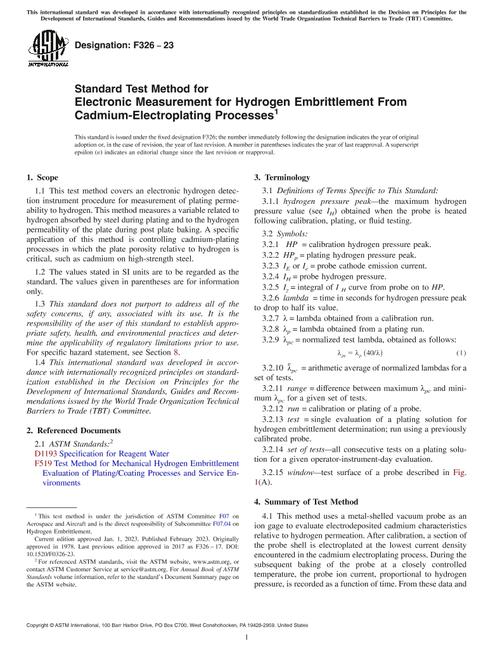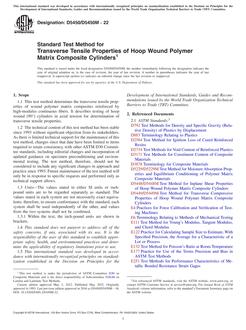-
-
Available Formats
- Options
- Availability
- Priced From ( in USD )
-
Available Formats
-
- Immediate download
- $69.00
- Add to Cart
-
- Printed Edition
- Ships in 1-2 business days
- $69.00
- Add to Cart
Customers Who Bought This Also Bought
-

ASTM F1165-20
Priced From $44.00 -

ASTM F326-23
Priced From $57.00 -

ASTM D3531/D3531M-24
Priced From $63.00 -

ASTM D5450/D5450M-22
Priced From $54.00
About This Item
Full Description
1.1 This test method describes the continuous measurement of the hemispherical heat flux to one or both surfaces of an uncooled sensor called a “Directional Flame Thermometer” (DFT).
1.2 DFTs consist of two heavily oxidized, Inconel 600 plates with mineral insulated, metal-sheathed (MIMS) thermocouples (TCs, type K) attached to the unexposed faces and a layer of ceramic fiber insulation placed between the plates.
1.3 Post-test calculations of the net heat flux can be made using several methods. The most accurate method uses an inverse heat conduction code. Nonlinear inverse heat conduction analysis uses a thermal model of the DFT with temperature dependent thermal properties along with the two plate temperature measurement histories. The code provides transient heat flux on both exposed faces, temperature histories within the DFT as well as statistical information on the quality of the analysis.
1.4 A second method uses a transient energy balance on the DFT sensing surface and insulation, which uses the same temperature measurements as in the inverse calculations to estimate the net heat flux.
1.5 A third method uses Inverse Filter Functions (IFFs) to provide a near real time estimate of the net flux. The heat flux history for the “front face” (either surface exposed to the heat source) of a DFT can be calculated in real-time using a convolution type of digital filter algorithm.
1.6 Although developed for use in fires and fire safety testing, this measurement method is quite broad in potential fields of application because of the size of the DFTs and their construction. It has been used to measure heat flux levels above 300 kW/m² in high temperature environments, up to about 1250 °C, which is the generally accepted upper limit of Type K or N thermocouples.
1.7 The transient response of the DFTs is limited by the response of the MIMS TCs. The larger the thermocouple the slower the transient response. Response times of approximately 1 to 2 s are typical for 1.6 mm diameter MIMS TCs attached to 1.6 mm thick plates. The response time can be improved by using a differential compensator.
1.8 The values stated in SI units are to be regarded as standard. The values given in parentheses after SI units are provided for information only and are not considered standard.
1.9 This standard does not purport to address all of the safety concerns, if any, associated with its use. It is the responsibility of the user of this standard to establish appropriate safety, health, and environmental practices and determine the applicability of regulatory limitations prior to use.
1.10 This international standard was developed in accordance with internationally recognized principles on standardization established in the Decision on Principles for the Development of International Standards, Guides and Recommendations issued by the World Trade Organization Technical Barriers to Trade (TBT) Committee.
Document History
-
ASTM E3057-19
currently
viewing
Standard Test Method for Measuring Heat Flux Using Directional Flame Thermometers with Advanced Data Analysis Techniques- Most Recent
-
ASTM E3057-16
Standard Test Method for Measuring Heat Flux Using Directional Flame Thermometers with Advanced Data Analysis Techniques- Historical Version





